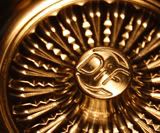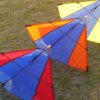The Saber II next to Brunel’s Suspension bridge in Bristol England.
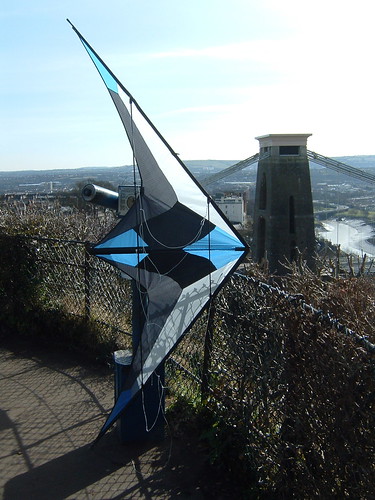
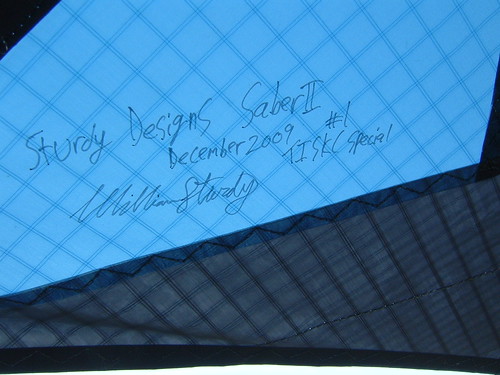
Earlier this year I was lucky enough to win a kite in an online raffle. The kite was the Saber II kindly donated by its designer and builder Will Sturdy. I never win anything so I was quite chuffed that the first thing I have one in ages was a kite. And this is no run of the mill average sport kite. It’s a top notch, beautifully made smooth and silky polyvalent kite. It tricks with the best and I’m really enjoying it. Every time I fly it I end up with a big grin on my face. It is just unbelievably rock solid in some of the tricks I enjoy most and it tricks wonderfully predictably and slowly. On top of all this, Will is a really nice guy. The best bit though is he is only 16 years old! Yes just 16 years old and already he is making top of the range kites that are as well made as the best kites I have flown from the UK’s top designers. The quality of Will’s sewing is superb and Will has used some really novel manufacturing techniques (more on these further in the review). I really am quite stuck for words here. If Will is making kites of this quality that fly so beautifully when he is only 16 years old, I can only imagine what he will be making in ten years time!
Unique construction traits
The Saber II has some really interesting construction features. Take a close look at the dark grey panels on the kite in the photo below. If you look closely you will see there are several lines of stitching criss-crossing these panels.
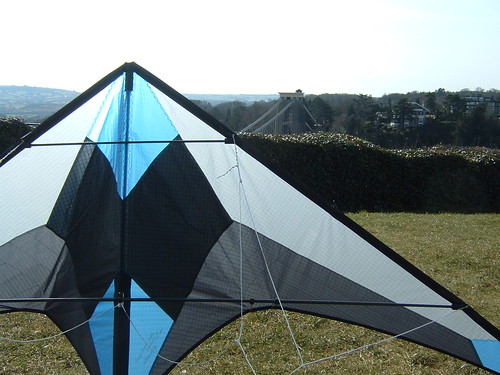
The next photo shows the panels close up. This part of the sail is actually double layered Icarex with a smaller mylar layer sandwiched between the two Icarex layers!!!
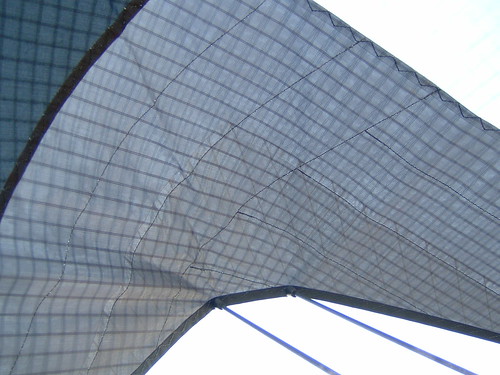
Will says that the second layer of icarex decreases the wear on the trailing section of the kite because he feels icarex is much more resistant to direct wear than mylar.
When I assembled the kite I noticed it had no trailing edge leech line. As a rule, I much prefer silent kites and I’m not keen on noisy kites. I was therefore a little dubious about whether I would enjoy the Saber. However, I was pleasantly surprised. There was no real noise at the lower wind speeds and, when the wind picked up, the noise was actually ok. The kite produced a deep rasping sound rather than an annoying higher pitched vibrating noise. I actually quite liked it. Will says he doesn’t use a leech line because a little bit of trailing edge vibration helps slow the kite down in gusts of wind and therefore helps with speed control.
The sail on the Saber II is VERY deep, deeper than on any other kite I have flown. The following photo gives you some idea for how long the standoffs are and just how deep the sail is…
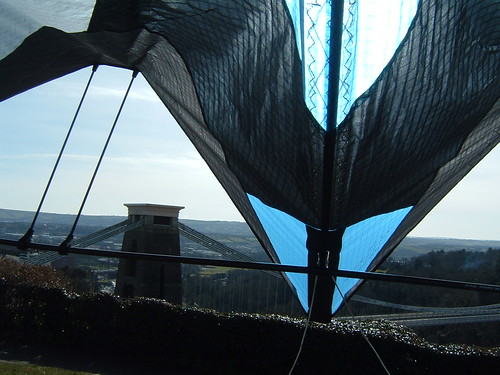
So how does it fly?
In a word….. ‘smoothly’
I have to admit, I have quite a few sport kites in my bag and I have tried (and sold on) many others over the years that I didn’t really click with. However, I very quickly clicked with the Saber II. After endless hours studying ‘Trick or Treat’ and Randy G’s excellent online tutorials, I can do most tricks now but I can’t do them consistently. I usually pull too hard or at the wrong time or too quickly etc and I only tend to be able to pull off some tricks one time in every ten attempts. However, with the Saber II my success rate increased considerably. If I pull too quickly, too slowly or at slightly the wrong time this kite still responds. It’s as though it really wants to do the trick and just puts up with my often ham fisted inputs. It compensates very well for my bad technique!
The Saber II also does tricks very slowly compared to other kites I have. It only takes an extra second or so to do each trick but that extra second makes a big difference to me as it just gives my slow brain a fraction more thinking time to give the next input in more complex moves like the Jacob’s ladder. Whilst I’m on the topic of Jacob’s ladders, this kite does them beautifully. I could spend an hour or so doing nothing else but JL’s with this kite. I still can’t do them perfectly, but I can do them fairly consistently with the Saber II and they look really good. For me, there are two tricks that the Saber II really excels at – the JL and the Flic Flac. Flic Flacs are just so predictable. The kite sits in a fade or a turtle for ages and it locks into flic flacs and makes them exceptionally solid and repeatable.
Aside from these two favourite tricks, the Saber II will handle any other trick or combo that you want to throw at it. Everything looks good on this kite! Yo yos, Lazy Susans, Coin Tosses, Axels, half axels and backspins were all easily accessible
On top of all the very capable trick moves, the Saber II is also a great precision kite. Crisp tight cornering and rail straight tracking are all there. The kite also spins well within its wing tip. Tight turns seem centred mid way up the leading edge.
I am going to have some fun with this kite!
So how can you get a Saber for yourself?
Will is very happy to take orders. You can email him directly at sturdydesigns@yahoo.com
The Saber II will set you back $240 and the UL will cost you $220 for ‘standard’ colours (Like mine with whatever colour desired where the blue is) Fully custom kites are +$20
A few more photos…

Excellent quality stitching…

Side view…
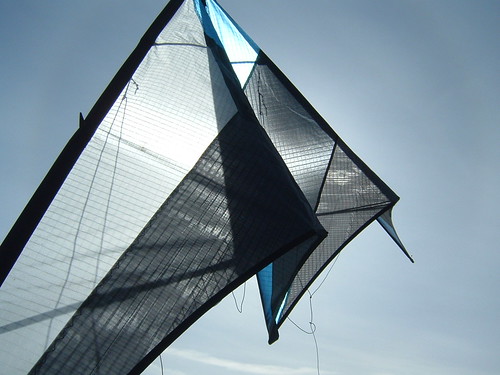
The weights…
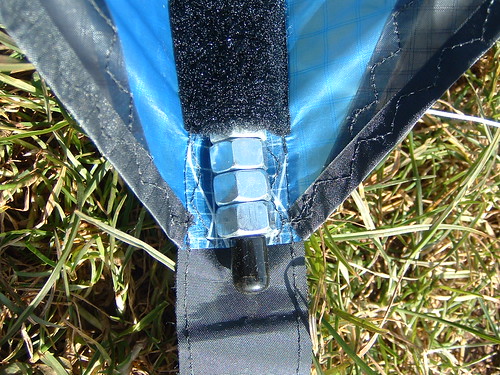
Nice clean nose…
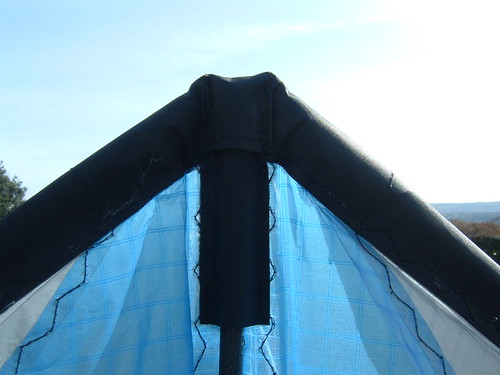




 A couple of points however:-
A couple of points however:-